
views
Taking Your Measurements
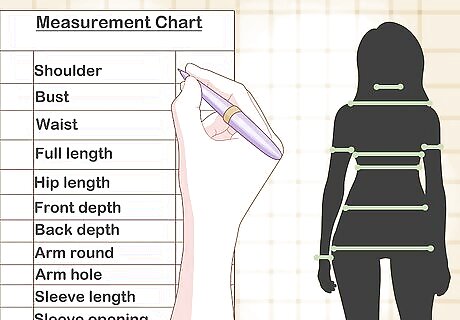
Prepare a measurement chart. You will fill the chart in with your measurements as you take them. This will make the information easy to find. Your chart should include the following sections and subsections: Shoulder measurement Vertical measurements: bust, waist, full length, hip length Round measurements: chest, bust, waist, hip Neck measurements: front depth, back depth Sleeve measurements: arm round, arm hole, sleeve length, sleeve opening
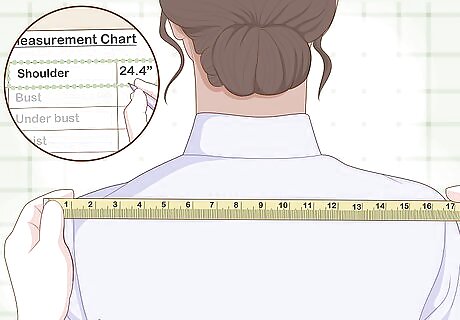
Measure your shoulders across your back, from tip-to-tip. Place the end of your measuring tape against your left shoulder, right at the tip where the bone is. Pull the tape across the back of your shoulders, and stop at your right shoulder. Record the measurement in the "Shoulder measurement" section of your chart. It might be easier to have someone do this for you. Alternatively, you can get a dress form or make a duct tape mannequin. If you are using a dress form, adjust the bust, waist, and hip dials to match your measurements.
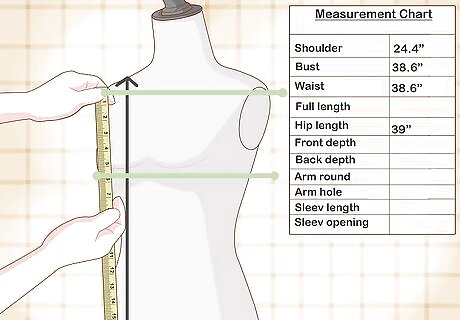
Take your vertical measurements starting from the top of your shoulder. Place the end of your measuring tape at the top of your shoulder. Pull the measuring tape down towards the highest point of your bust and write that measurement down in the "bust" subsection. Next: Continue pulling the tape down to the narrowest point of your waist. Write the measurement down next to "waist." Pull the tape down to where you want the kurti to end, and record the measurement under "full length." If you're doing this on a dress form, you may have to hold the tape against the waist as you kneel. For the hip, place the tape at your shoulder and measure straight down to your hip's fullest point. This completes the "Vertical measurements" category. Always put a finger between your measuring tape and your body—this prevents your measurements from being too snug.
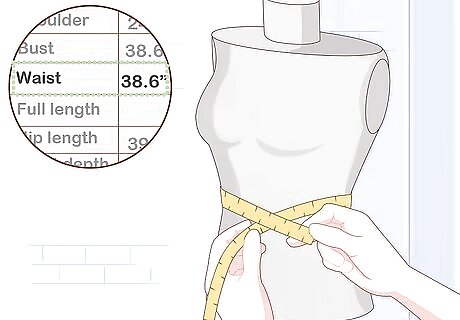
Wrap the tape around your chest, bust, waist, and hips. Place the tape behind your back, right under your armpits, and wrap it around your chest (not bust). Record the measurement under the "chest" section of your "Round measurements" category. Next, measure around the fullest part of your bust, the narrowest point of your waist, and the widest part of your hips. Write the chest, bust, waist, and hip measurements in each of their designated sections. Don't pull the tape tight or suck in your stomach. Keep both relaxed.
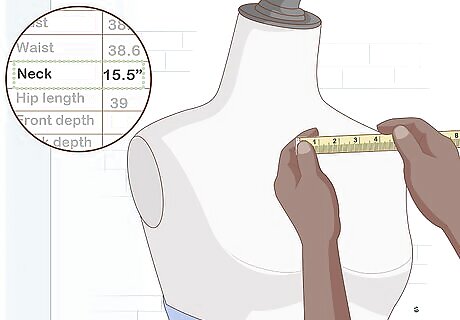
Measure from your shoulder to where you want the collar to end. Place the end of the tape at the top of your shoulder and pull it down across the front of your chest. Stop when you get to where you'd like the collar to end, then write that number next to "front depth" under the "Neck Measurements" category. Repeat the process for the back of your neck. This measurement should be rather small, about 1 to 2 in (2.5 to 5.1 cm). Don't worry about the shape of the collar (e.g., round, V, or square). Just focus on the length.

Record your sleeve measurements according to the chart. Wrap the tape around the fullest part of your upper arm, typically right at the armpit, and write the measurement under "arm round." Next, wrap the tape around your arm where it joins your body, and write that number under the "arm hole" section. Finally: Sleeve length: measure from the tip of your shoulder down to where you want the sleeve to end (e.g., halfway down your arm). Sleeve opening: wrap the tape around the spot where you want the sleeve to end (e.g., halfway down your arm) and record that measurement as well.
Drafting the Body Pattern
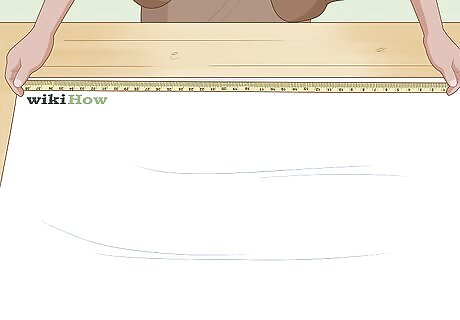
Mark the kurti length on pattern paper, starting from the bottom. Place the end of your measuring tape on the bottom corner of your paper. Pull the tape along the edge of your paper until you reach the "full length" measurement. Make a mark at this point. The mark that you make is actually the shoulder, not the bottom of the kurti.
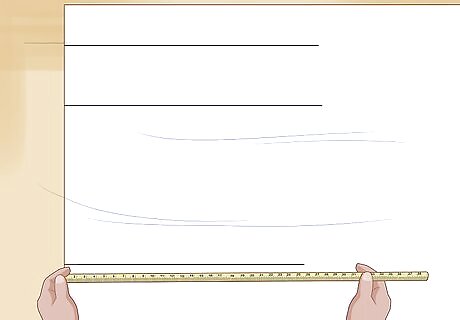
Add marks for the bust, waist, and hip vertical measurements. Hold the end of the tape against the "full length" mark you made and pull it down towards the end of the paper. Refer to your measurement chart, then make marks where your bust, waist, and hip measurements fall. You don't need to do the "full length" mark because that's the bottom edge of the paper.
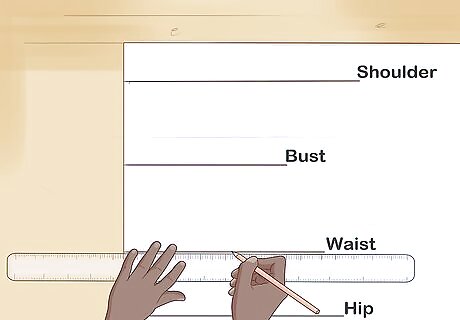
Draw horizontal lines at your shoulder, bust, waist, and hip points. Place a triangular straight edge or Swanson tool at the top of your vertical line where the shoulder is, and use it to sketch out a long, horizontal line. Move the straight edge down until you hit the bust mark, and draw another horizontal line. Do the same thing for the waist and hip points. Make the shoulder line half your shoulder measurement, and the other lines a quarter of your round bust, waist, and hip measurements. Align 1 side of the Swanson tool against the vertical line. Use the other side of the tool to draw the shoulder, bust, waist, and hip lines.
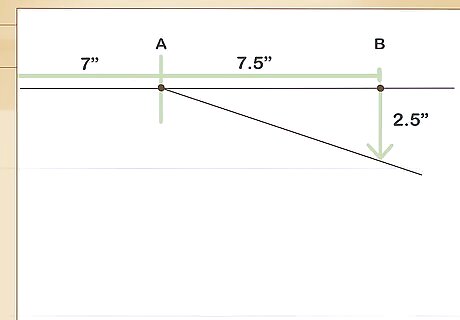
Sketch out the shoulder slope. Starting from the edge of the paper, measure 2 ⁄4 in (7.0 cm) along the shoulder line and make a mark (Point A). Measure again, this time to 7 ⁄2 in (19 cm) and make another mark (Point B). Finally, make a dot 1 in (2.5 cm) below Point B. Connect that dot to Point A. These measurements are standard and should work for most people. Use a ruler when drawing the diagonal line connecting the dot to Point A.
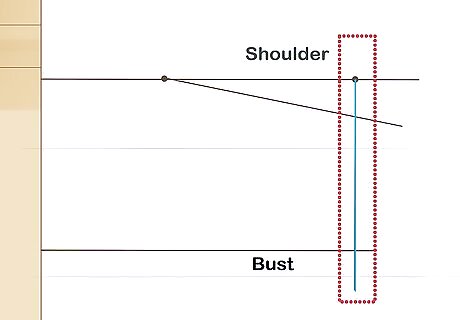
Mark half your shoulder measurement on the shoulder line. Divide your shoulder measurement by 2. Measure across the horizontal shoulder line (not the slope), and make a mark at this half measurement. Draw a vertical line from this point straight down to your horizontal bust line. For example, if your shoulder measurement is 14 in (36 cm), make the mark at the 7 in (18 cm) point. Erase the shoulder line and anything outside the slope so that you don't get confused later on.
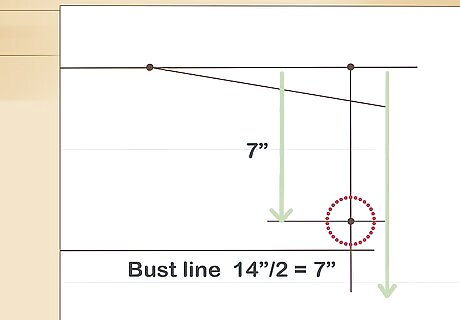
Divide your arm hole by 2, then make a mark on this vertical line. Divide your arm hole measurement by 2 first. Next, go to the vertical line that you just drew, from the shoulder to the bust. Measure down this line from the shoulder point, and stop when you hit your half-arm hole measurement. Make a mark. Make sure that you are measuring down from the horizontal shoulder line, and not up from the horizontal bust line.
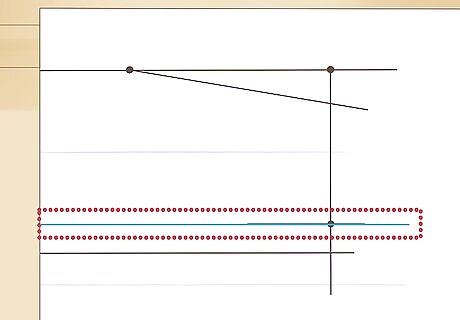
Add a horizontal line from the mark to the edge of the paper. Place the triangular straight edge on the half-arm hole measurement mark. Draw a horizontal line towards the edge of the paper. This will be the line for your "round chest" measurement. Don't worry about the exact length of the line; try to make it around a quarter of your round chest measurement, however.
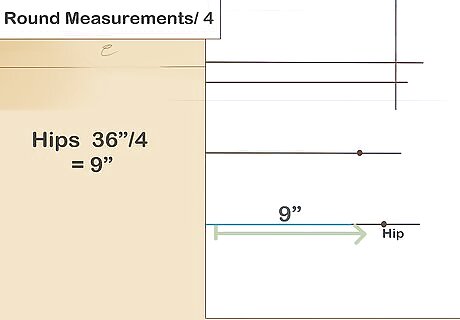
Divide your round measurements by 4, then mark your horizontal lines. Place the measuring tape on the horizontal hip line, and measure out a quarter of your hip measurement. Make a mark at this point, then do the same thing for the waist, bust, and chest lines. For example, if your hips measured 36 in (91 cm), your new hip measurement would be 9 in (23 cm). Measure 9 in (23 cm) along the hip line and make a mark.
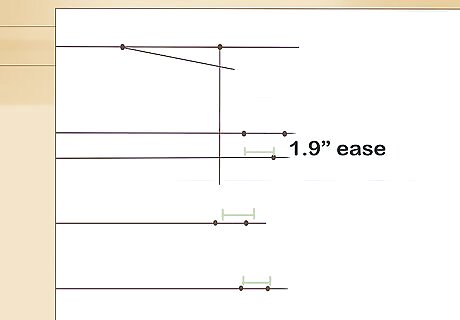
Add ⁄4 in (1.9 cm) ease to your chest, waist, and hip lines. Go to the mark you made on your horizontal chest line. Measure out ⁄4 in (1.9 cm) and make a mark, preferably using a different color of pen or pencil. Skip the bust line, and repeat the process for the hips and the waist. If you want the kurti to be more fitted in the hips, reduce the ease to ⁄2 in (1.3 cm). "Ease" is the extra space that non-stretching clothing has. It allows for the garment to fit comfortably. If you don't add the ease, the kurti will be too tight. You won't have room to move around or breathe.
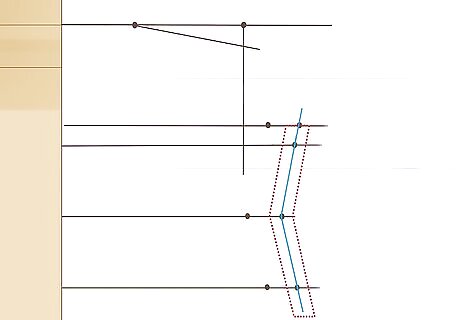
Connect the ease dots to the waist and bottom of the paper. Use a ruler to draw a line from the chest ease dot to the waist ease dot, and from the waist ease dot to the hip ease dot. Finally, draw a vertical line from the hip ease dot straight down to the bottom edge of the paper. The bust mark should fall within the line between the chest and waist ease dots. If the bust mark falls outside the line connecting the chest and waist ease dot, add more ease to the chest and waist, and try again. Make the line between the chest and waist ease dots straight, but gently curved between the waist and hip ease dots. If you can, use a dressmaker's curved ruler for this. When you're done, go back and use a French curve (or similar tool) to gently curve the corner in the waist created by the joining lines. Curve the corner between the hip and bottom vertical line too.
Adding the Arm and Neck Holes
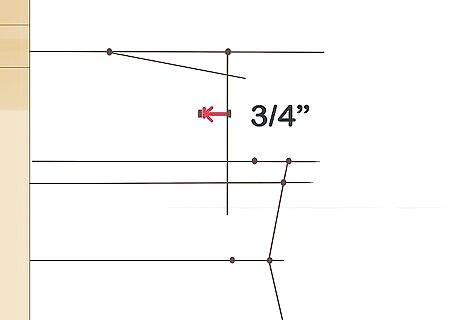
Find the arm hole line's center, then make a mark ⁄4 in (1.9 cm) inward. Go to the vertical arm hole line that you drew between the shoulder slope and the chest line. Find the midpoint of that line, then measure out ⁄4 in (1.9 cm) from it, going towards the edge of the paper. Make a mark at this new point. Think of this as creating a reverse "ease" point.
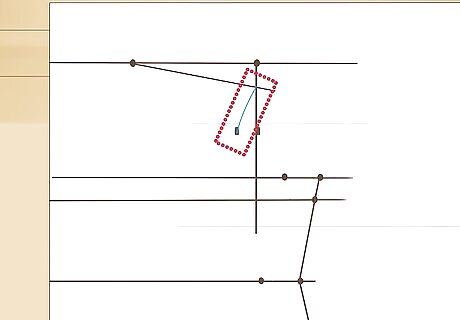
Connect the shoulder slope to the chest line, bisecting this point. Use a ruler to connect the ease point of your shoulder slope to the ⁄4 in (1.9 cm) mark. Next, use a French curve tool to connect the original mark on your chest line. This completes the front arm hole. You are using the ease point on the shoulder slope, but the original point (not ease point) on the chest line. If you don't have a French curve, you can draw the arm hole freehandedly.
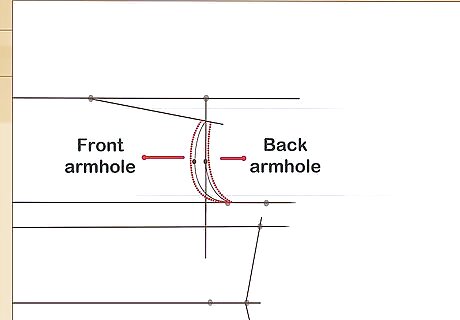
Add the back arm hole, bisecting the original arm hole's midpoint. Draw a curved line going from the original mark on the chest line to the original midpoint mark on the arm hole line—not the ⁄4 in (1.9 cm) mark. Next, draw a straight, vertical line going from the original midpoint mark straight up to the shoulder ease point. This will make the back arm hole. Make the line a different color, if possible; alternatively, make it dotted. When you cut the kurti, you will cut this part first. Then, you will cut into the pattern and trace the front arm hole.
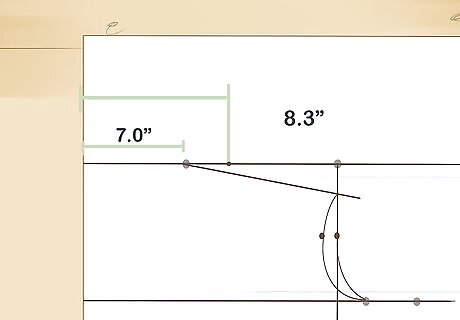
Widen the neck hole along the shoulder slope, if desired. Return to the 2 ⁄4 in (7.0 cm) mark that you made on your shoulder line. This will give you a fitted neck hole. If you wish to create a wider neck hole, move the point further along the shoulder slope. For example, you can widen your neck hole to 3 ⁄4 in (8.3 cm). Remember, your neck hole will be twice as wide after you cut the kurti.
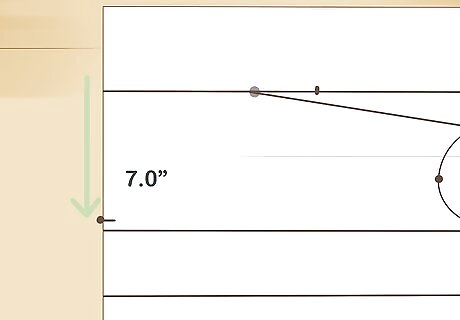
Make a vertical line based on your desired neck depth. Place your ruler on the 2 ⁄4 in (7.0 cm) mark on your shoulder slope (or whatever distance your mark is). Draw a vertical line from this mark, down to where you decided you wanted your neck hole to end. This is the front neck hole. You will trace the back neck hole later using a different color.
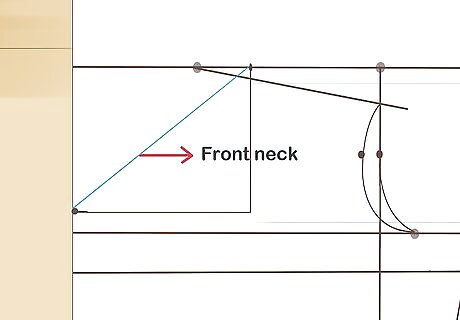
Connect the vertical line to the paper's edge, then draw your collar. Connect the end of the vertical line to the edge of the paper with a triangular straight edge first. This will give you a rectangular shape. Use a French curve tool to draw a curved line in the bottom corner of the rectangle. If you don't want a curved neckline, you can leave it as a rectangle or turn it onto a V-shape. You could even add a scalloped edge! Whichever shape you choose, remember that you are only drawing half of it for right now. For example, if you wanted a V-neck, you'd draw a diagonal line.
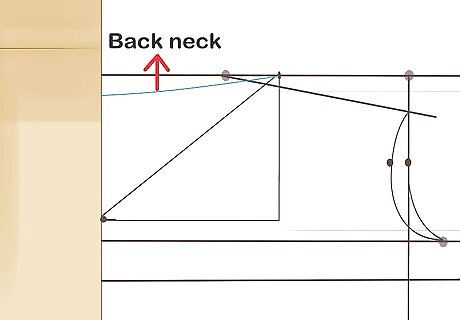
Repeat the process for the back neck hole using a different color. Go back to the vertical line that you draw at the beginning of your neck hole. Measure down to whatever length you decided for the back neck hole. Connect this point to the edge of the paper with a gently curving line. The back neck hole should always curve, even if the front neck hole is a V or rectangle. Like with the arm holes, you will trace and cut this part first, then go back and do the front neck hole.
Drafting the Sleeve Pattern
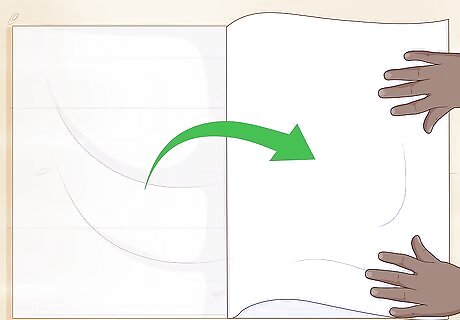
Fold a sheet of paper in half. While you can draft and cut a kurti pattern using a half-dress shape, you need a full sleeve shape in order to draft and cut a kurti sleeve. The sleeve needs to be symmetrical, however, which is why you need to fold the paper in half first. Keep the folded edge of the paper facing you. Depending on the length of your desired sleeve, a regular sheet of printer paper should work just fine for this.
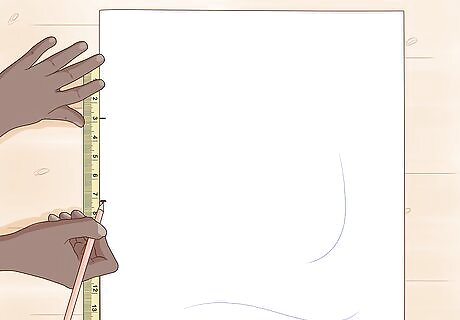
Mark the sleeve length on the folded edge. Place your measuring tape on the edge of the paper. Pull the tape along the folded edge, then make a mark when you reach your desired sleeve length. The exact placement of the mark does not really matter, but it should be close to the folded edge. This mark will be the top of your sleeve. The edge of the paper is the opening of the sleeve.

Measure and mark the cap height of your sleeve. Determine what size clothing you wear first: small, medium, or large/extra-large. Next, place the end of the measuring tape on the mark that you just made, and measure down the length of the sleeve. Make a mark on the sleeve based on the following: If you are a size small, make a mark 3 ⁄2 in (8.9 cm) from the top edge of the sleeve. For a size medium, make a mark 3 ⁄4 in (9.5 cm) from the top edge. If you're a size large or extra-large, measure down 4 in (10 cm), and make your mark.
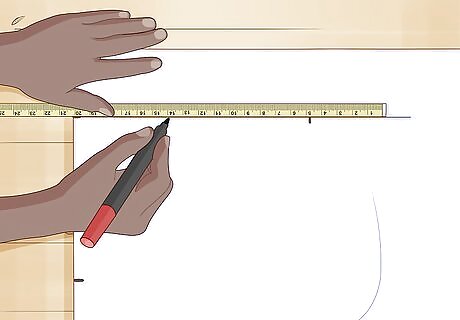
Draw a line out from the mark using half of your arm round measurement. Divide your arm round by 2 first. Next, place a ruler on the paper, aligning it with the cap height mark. Draw a vertical line away from the folded edge of the paper based on your half arm round measurement.
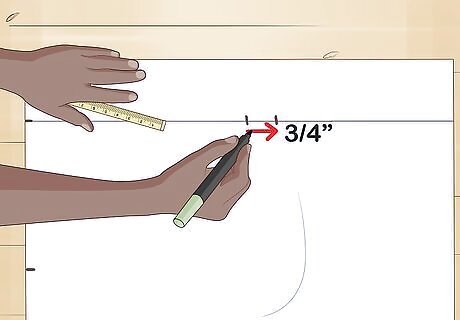
Add ⁄4 inch (1.9 cm) ease to your arm round line. Simply extend your arm round line by ⁄4 in (1.9 cm). If you used a different ease measurement for your chest line on the body pattern, then use that ease instead.
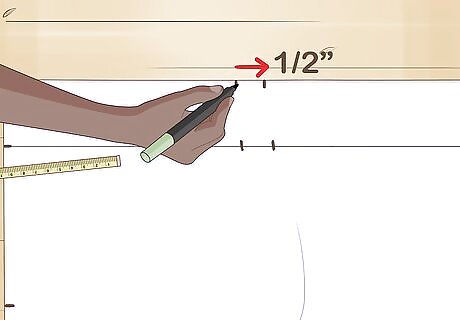
Mark half your sleeve opening measurement, plus ⁄2 in (1.3 cm) ease. Divide your sleeve opening measurement by 2 first. Next, place your measuring tape against the edge of the paper. Measure out half your sleeve opening measurement, then make a mark. Measure out by ⁄2 in (1.3 cm) and make another mark. You should still add ⁄2 in (1.3 cm) ease here even if you added ⁄4 in (1.9 cm) ease to the arm round.
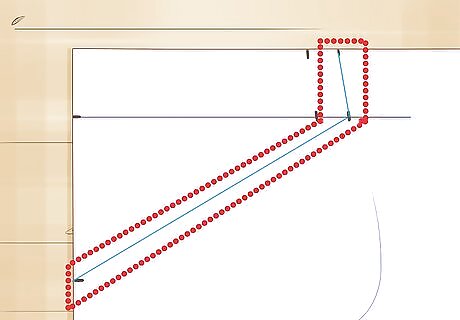
Connect the 2 marks, then connect the mark to the length line. Place a ruler against the arm round ease and the sleeve opening ease marks, and draw a straight line to connect them. Next, place the ruler against the arm round ease and the top edge of your sleeve length line. Draw another line to connect these 2 points too. The top edge of your sleeve length line is the mark that you drew at the very beginning. You won't be cutting along this line, so make it light.
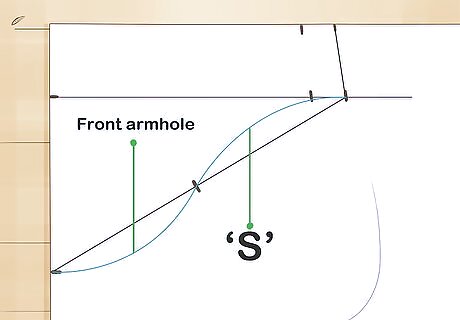
Find the diagonal line's midpoint, then draw an S-shaped line bisecting it. Go to the second diagonal line that you draw, connecting the arm round ease mark to the top length mark. Find the center of that line, and make a small mark. Curve the diagonal line outward as it goes to the top length mark, then curve it inward as it goes to the ease mark. The outward curving line is the sleeve cap. The inwardly curving line is the armpit. Use a French curve tool for this, or free-hand it. This completes the front part of your sleeve pattern.
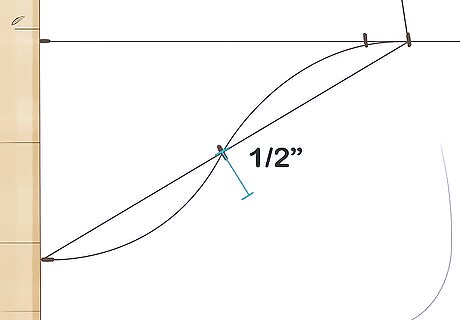
Measure out ⁄2 in (1.3 cm) from the midpoint of the diagonal line. Go back to the diagonal line that you drew connecting the ease mark to the sleeve length mark. Find the midpoint again, and make another mark, ⁄2 in (1.3 cm) away from it. Use a different color of pen or pencil for this mark. This will eventually become your back sleeve pattern.
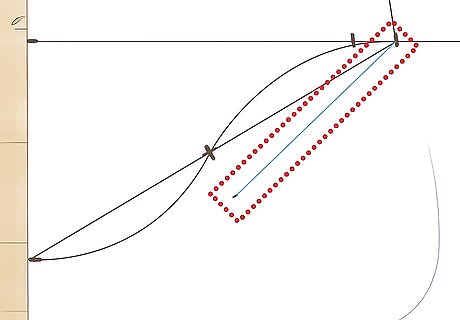
Connect the ease mark to this mark. Place your ruler on the arm round ease mark, and angle it towards the mark that you just draw. Draw a line to connect these 2 points. Use the same color as you did for that mark. Don't connect this line to the top of the sleeve length line.
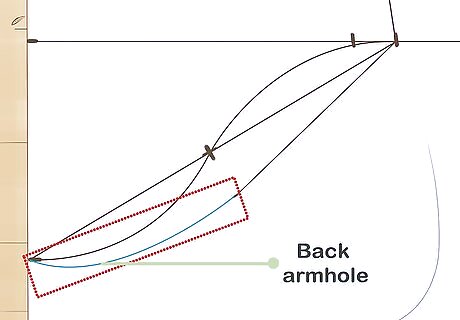
Draw a curved line connecting this mark to the sleeve length line. This is similar to how you draw the curved sleeve cap. You can do it by hand or use a French curve tool instead. Start the curved line at the mark you made earlier, and finish it at the top of the sleeve length line. This completes the back sleeve pattern. Use the same color that you used for the diagonal line you drew earlier.
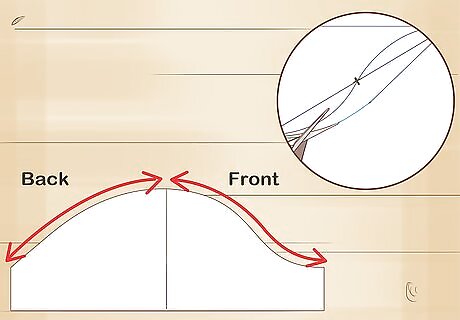
Cut the sleeve along the back hole, unfold it, then cut the front hole. Cut the sleeve out while the paper is still folded along the back arm hole line. Next, unfold the sleeve, and cut along the front arm hole line on 1 side. When you first cut the paper, both sides will create the back arm hole. When you unfold and cut the paper again, the other side will become the front arm hole! Don't forget the side edge of the sleeve.
Cutting the Pattern
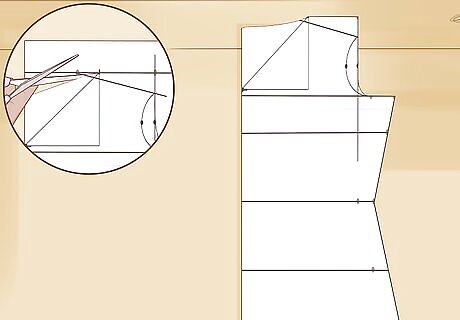
Cut out the dress pattern, including the back neck and back arm holes. Follow the shoulder slope and side edges of your kurti, and be very careful not to cut the front neck and arm holes. Don't worry about adding seam allowances. You are skipping the front neck and arm holes because those are bigger. Don't worry about adding the seam allowance here. You will add those later, when you cut the fabric.
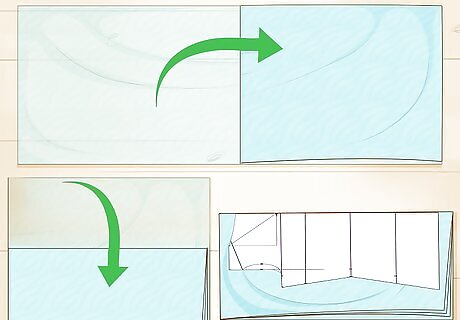
Fold your fabric in half lengthwise, then in half again widthwise. Fold the fabric in half lengthwise first, so that the selvages match up. Next, fold it in half widthwise so that the cut ends match up. Your fabric should now be the same length as your desired kurti, plus about 2 in (5.1 cm). Purchase fabric that is twice the length of your desired kurti, plus 4 in (10 cm). Cotton is a great beginner fabric because it is easy to work with, but you can also use silk or linen.
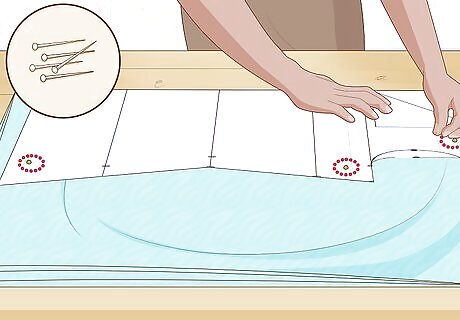
Pin the pattern to the fabric's folded edge, then add the seam allowances. Place your pattern on top of your folded fabric. Make sure that the straight edge of the pattern is aligned with the long, folded edge of the fabric. Make the bottom edge of the pattern about 1 in (2.5 cm) from the bottom edge of the fabric. You need extra space above the shoulders for the seams.
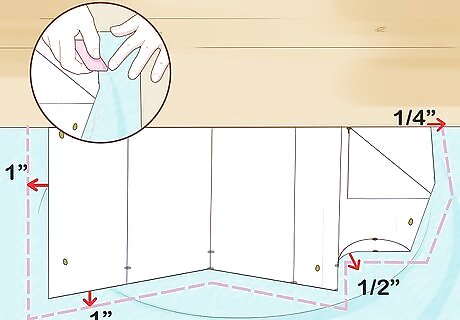
Draw the seam allowances on using tailor's chalk. Use a light color for dark fabrics, and a dark color (such as blue) for light fabrics. You can make all of the seam allowances ⁄2 in (1.3 cm), or you can make them standard: Bottom hem and sides: 1 in (2.5 cm) Arm hole and shoulder: ⁄2 in (1.3 cm) Neck hole: ⁄4 in (0.64 cm)
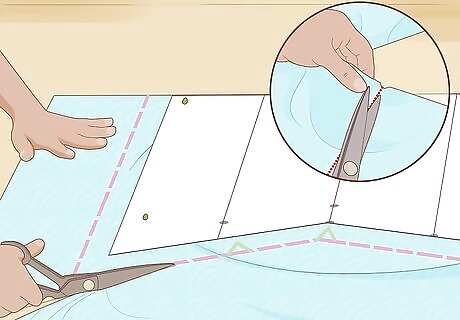
Cut the fabric along your seam allowances using sharp scissors. It would be a very good idea to cut V-shaped notches into the hip and waist seams. This will help you align the fabric pieces when you sew them together. You are actually cutting through all 4 layers of fabric. Don't worry about the front neck and arm holes; you'll take care of those next!
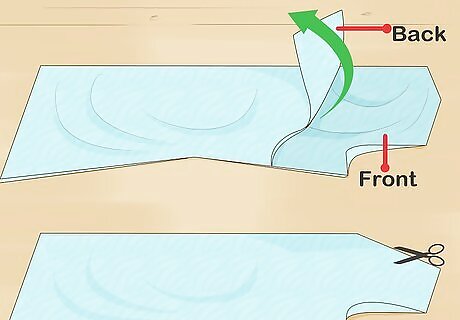
Set aside 2 pieces, then trace and cut the front arm and neck holes. Lift the top 2 fabric pieces off of your stack, and set them aside. Cut the front arm and neck holes from your pattern, then pin it to the remaining fabric pieces. Trace around your pattern, adding seam allowances like before, then cut along them. Use the same seam allowances as you did for your back pieces. For example, if you used standard seam allowances, then use them here as well.
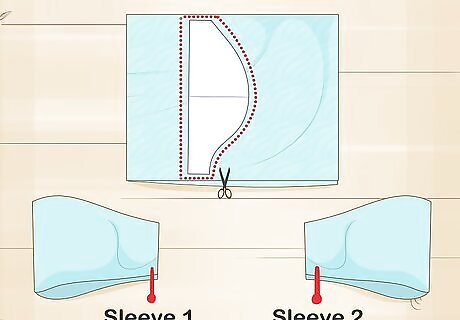
Pin the sleeve to the fabric, trace the seams, then cut it out. Stack 2 layers of scrap fabric with the right sides are facing in. Pin the sleeve pattern on top, making sure that the length is parallel to the grain. Trace the seam allowances, then cut the sleeve pieces out. You can use your own seam allowances, or you can use standardized seam allowances. For standardized seam allowances: add 1 in (2.5 cm) to the bottom and side edges, and ⁄2 in (1.3 cm) to the curved edge. Fold the sleeves in half so that the sides match up, then cut a little notch into the top, curved edge. This will help you center the sleeve onto the shoulder!



















Comments
0 comment